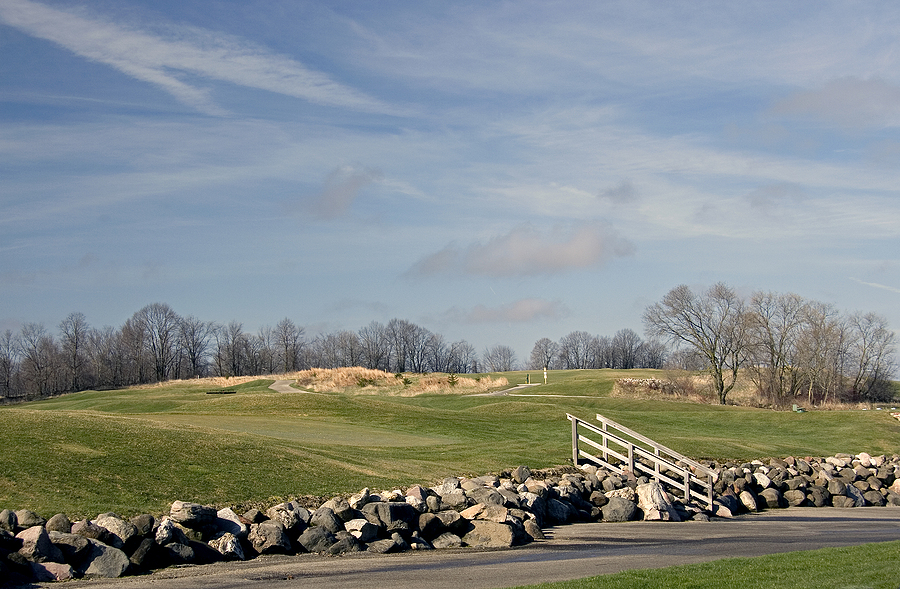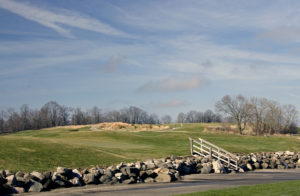
20 Apr Holes Be Gone! How to Manage Erosion
 Divots aren’t the only types of holes that golf course superintendents have to be mindful of on their greens and fairways. Soil erosion is a real threat as well. And unlike with divots, it’s a lot more difficult to repair a hole in your turfgrass that’s caused by erosion than it is to repair one caused by a club head.
Divots aren’t the only types of holes that golf course superintendents have to be mindful of on their greens and fairways. Soil erosion is a real threat as well. And unlike with divots, it’s a lot more difficult to repair a hole in your turfgrass that’s caused by erosion than it is to repair one caused by a club head.
Erosion presents a regular threat to courses, and if areas of concern are not addressed promptly, it could lead to major turfgrass damage and potentially even course closure while repairs are made. While erosion may be inevitable on most courses, proper management can prevent it from becoming a debilitating problem.
How Erosion Occurs on Golf Courses
Golf courses are known for their uneven slope and terrain. And while these changes in the course are a great way to challenge golfers, keep in mind that rainwater needs a place to go somewhere after it falls—and it usually finds the lowest place to collect. This means that those hills and valleys could see heavy flows of rain running down them. Over time, this flow of rain could take soil with it too, creating holes and hazards that can render a course unplayable. The good news is that with proper course management, erosion can be controlled and minimized so that you can keep your course open and playable.
How to Manage Erosion
Identify Trouble Spots
In order to manage erosion, it’s important to identify the areas of the course where it’s most likely to occur. These spots include:
- Areas where the grass is worn or soil is exposed
- Steep slopes
- Highly trafficked areas of the golf course where turf may be matted
- Banks near rivers, lakes, streams or shorelines
Establish Vegetation
One of the best ways to prevent soil erosion is to take the appropriate measures to halt it from starting in the first place. The best way to do this is by establishing vegetation in critical areas of the course. Establishing vegetation and keeping your turfgrass healthy and lush will prevent soil from eroding as, rather than washing away soil, the water will flow over the turf.
Consider Implementing Erosion Control Products
Turf reinforcement mats are one solution for areas of the course where water flow has the potential to be the most significant and thereby cause the most damage. Preventative measures such as this come with an upfront cost, but can save a lot of money and hassle in the long run.
React Quickly
Finally, it’s imperative to react quickly to the first signs of soil erosion on your golf course. Rope off trouble spots on your course and address these areas by reseeding or placing erosion control blankets in said areas to revive them and make them playable once again. If necessary, rebuild the soil in the area to re-establish slope and restore the integrity of your golf course.
Contact Soil & Water Consulting Today
As a Brookside Labs Partner, Soil and Water Consulting is committed to ensuring that your golf course is always playing at the top of its game. Contact us today to learn more about our turf, soil and water consulting services to help your course avoid erosion and other problems.

